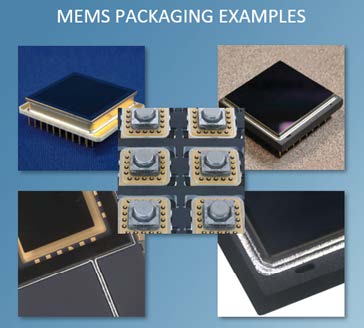Low Sealed-In Gas Pressure
Download the Paper!The number of particles within a hermetically sealed device often has significant effects on not only the product’s performance but also its longevity. From impacting the potential image clarity of various IR sensors to possibly increasing the lifespan of MEMs devices destined for space by an extra few years, sealed-in-gas pressure is an important metric to measure and prioritize during assembly. The final pressure within a hermetically sealed package is affected by numerous factors, such as hermetic seal quality, environmental pressure at the sealing time, and sources of particles within the sealed volume. To combat any potential outgassing or particle generation, getters (adsorbent materials) are usually used within the device.
Understanding the tools available to optimally reduce sealed-in-gas pressure for hermetic seal applications is critical to maximizing the effectiveness of the end product. This article explores the many techniques for minimizing long-term particle presence in hermetic packages. Using Palomar’s SST 3150 as an example tool for hermetic seal applications, the following elements are explored in detail: Seal strength and the factors that contribute to it, environmental vacuum level and methods to reach pressures as low as possible, Getters and considerations for how they can be optimally activated during hermetic sealing.
Download to read more...
